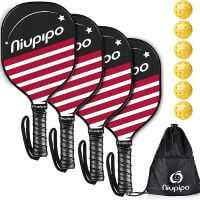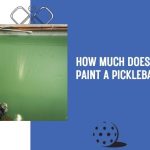Are you tired of playing with a plain and boring pickleball paddle? Have you ever thought about adding some personal flair to your equipment? Look no further! Painting your pickleball paddle is a fun and easy way to add personality to your game. In this blog, we will see how to paint a pickleball paddle.
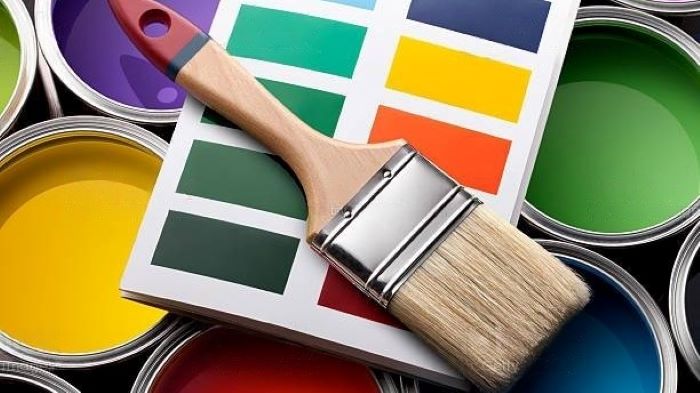
Here, we will review all the materials needed and provide step-by-step instructions on how to paint your pickleball paddle like a pro.
So, grab your supplies, and let’s get creative!
You Might Also Like:
Can You Paint a Pickleball Paddle?
The short answer is yes! You can easily paint a pickleball paddle with any acrylic paint, and purchasing custom-painted paddles is possible.
Before painting, clean the surface of your paddle with a damp cloth and allow it to dry completely. Once the surface has been prepped, select the colors that best match your style and create designs or patterns on the face of your paddle using stencils or freehanding with a brush.
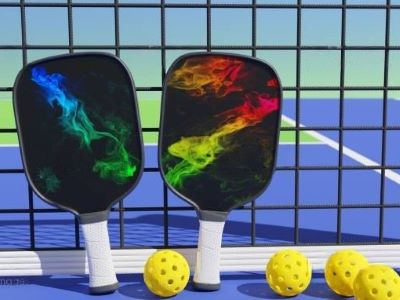
After adding all desired details, allow each layer of paint to dry thoroughly before applying additional layers as needed. Finally, coat all painted areas with two layers of sealant for added protection from wear and tear during playtime!
Painting a pickleball paddle can be an enjoyable way to express yourself while playing this fun sport - so grab some paints and get creative!
Pickleball Paddle Painting Materials
There are a few materials you need to paint the pickleball paddle. Here is the list of materials you will need –
| Painting Paddle Materials | |
| Materials | Description |
| Sandpaper | You must have sandpaper to rough up the surface of the pickleball paddle. |
| Cleaning Supplies | You will need soap, water, and a towel to clean your paddle. |
| Primer | You need a primer for the paint to stick on the paddle, and it will provide a smooth finish. |
| Paint | You can use acrylic, spray, or enamel paint to paint your paddle. |
| Brushes | Keep different types of brushes when you paint the paddle. |
| Sealer | Use a sealer to protect your paint, which will also help protect it from damage. |
How to Paint Your Pickleball Paddle?
Are you tired of the same old pickleball paddle design? A pickleball paddle painted in your favorite colors is a great way to make your equipment stand out on the court. Here’s a step-by-step guide on how to paint your pickleball paddle:
Step 1: Prepare the Paddle
To paint, you must prepare the paddle first. Before painting your pickleball paddle, make sure it is clean and dry. Remove any dirt, dust, or debris from the surface using a cloth or sponge. The paint will adhere to the surface entirely if this is done.
Step 2: Sand the Paddle
Once you are prepared and clean the paddle, you need to sand the paddle. For this, use 220-grit sandpaper to rough up the surface of the paddle so that it will help the primer and the paint to last longer.

Step 3: Apply Primer
The next step is to apply a primer on the paddle, providing a better adhesive surface for paint and helping hide any wood grain or blemishes. Use a foam roller or brush to apply the primer across the paddle evenly. Let the primer dry completely before proceeding further.
Step 4: Apply Paint
Now that we have sanded the paddle and applied primer let’s start to paint the paddle. To paint the paddle, use acrylic, spray, or enamel paint and a small brush or spray paint, and apply a thin coat of the paint. Before applying another coat, let the paint dry completely. Until you achieve the desired color and coverage, repeat this step.
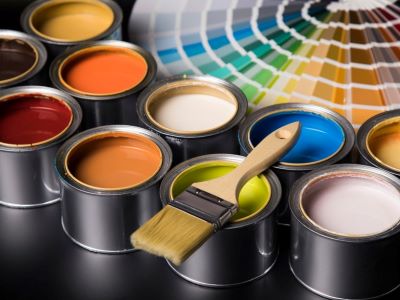
Step 5: Add Design
Once the paint on the paddle is completely dry, you can start designing your paddle. You can create your preferred design using stencils, tape, or freehand. Make sure before proceeding to the next step your design is dry entirely.
Step 6: Apply a Clear Coat (Optional)
Since your paddle is ready, it just needs a final touch-up. So, you need to apply a clear coat; it will make the paint and design last longer or be more durable. Plus, prevent it from chipping and skinning.
Step 7: Seal the Paddle
The last step is to seal the paddle. You will require a waterproof sealant to seal the paddle, which will help protect the paint from moisture and last longer.
Following these simple steps, you can easily paint your pickleball paddle and give it a unique and personalized look. Show off your style on the court and have fun playing pickleball with your new paddle design!
FAQs
No, painting your paddle is not legal, according to the USAPA. According to the USAPA Official Rulebook, “paddles must be plain white or a light solid color with no writing or designs on them.” But, not every paint or paddle is prohibited for painting. For more details, you can check USAPA Official Rulebook – Section 2.E.6.
Painting the pickleball paddle is prohibited because it affects the surface texture and reduces the amount of spin a player can put on the ball during play. A paddle’s flat, smooth surface is designed to enhance spin and give players more control over their shots. Painting a paddle would alter this texture, reducing its effectiveness and making it hard for players to generate spin on their shots.
Customizing a pickleball paddle can involve several different aspects. Depending on your playing style and preferences, you can choose from various materials, shapes, sizes, weights, and colors. Consider adding custom grips or grommets to customize your paddle further. Lastly, you can add decals or stickers to the paddle for personalization.
Conclusion
Painting your pickleball paddle is a fun and creative way to make it stand out on the court. You can transform your plain paddle into a work of art that reflects your personality and style with suitable materials and techniques.
By following these DIY Painting Paddle steps, you’ll have a custom pickleball paddle that looks amazing and performs as well as before.
So go ahead – grab some paintbrushes, get creative with colors and patterns, and take your game to new levels!

I am a professional physiotherapist and the author of the BallSportsPro. I worked with athletes of all levels, from amateur to professional, and i helped them overcome injuries and improve their performance. I am a certified Pickleball instructor and has been playing the sport for over 10 years.



